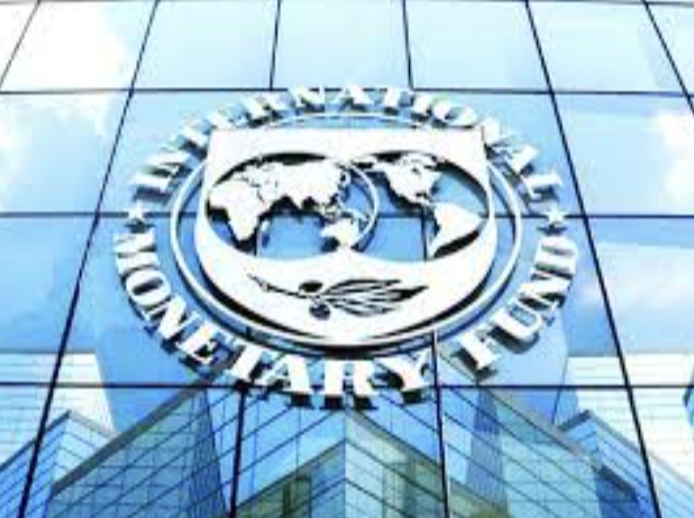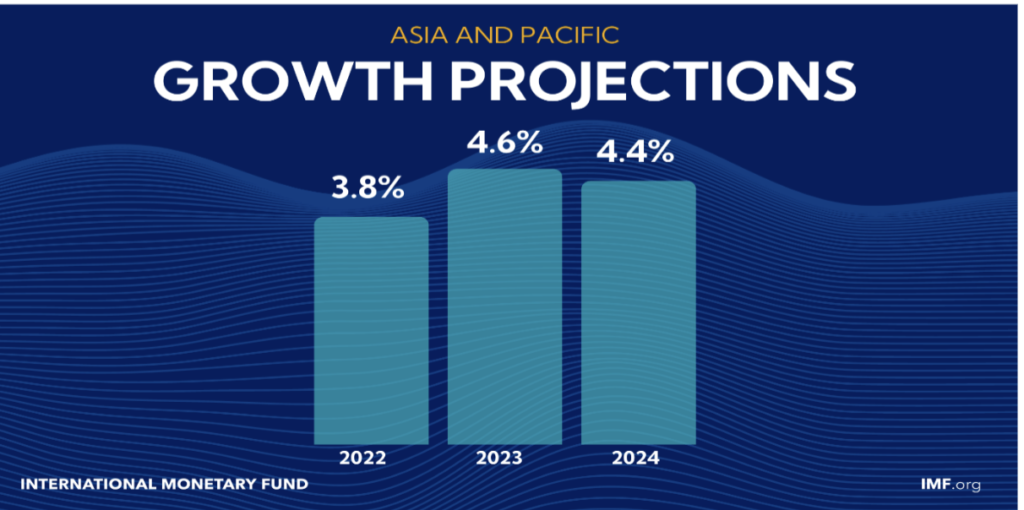
IMF LATEST FORECAST FOR INDO-PACIFIC: INDIA AND CHINA TO DRIVE WORLD ECONOMIC GROWTH
THE BACKDROP OF THE EVENT
The International monetary fund has recently released its report pertaining to growth forecast for the
global economy. The report indicates that U.S and Europe will no longer be the propellants of world
economy. As per the report the two Asian giants that is India and China are going to be the economic
powerhouses of the world economy as their contribution to the growth of global economy stands at
roughly 50%. It has been noted that the recovery of Chinese economy and resilient growth of Indian
economy are set to keep the world economy growing smoothly. However, the report also cautioned
about few threats that the Indo-Pacific may have to face.

ASIAN DOMINANCE: RECOVERY OF CHINA AND RESILIENT GROWTH OF INDIA
As per the report India and China are supposed to account for roughly half of the world economic
growth. India and China are supposed to grow by 5.9% and 5.2% respectively. The rejuvenation of
Chinese economy would have implications for the entire region as there will be a huge boost in
household consumption of goods and services both of which are heavily manufactured and widely
rendered by China. Chinese economy today is so integral to the world economy that its functioning
affects the larger community, particularly economies in Asia are directly affected by Chinese
performance.
China and India individually contribute roughly 35 and 15 percent the contribution of
Indo-pacific to the world economic growth stands at roughly 70%. The two countries have an
international rivalry but this rivalry seems to be serving the world in the best possible manner that is
by single-handedly keeping the world economy moving forward despite the several issues such as war
in Ukraine and financials upheavals being faced by the entire global community. The growth rate for
the entire region is also expected to increase to 4.6% from 3.8% in the year 2022.


WORD OF CAUTION BY IMF
The IMF has unequivocally stated that the projected growth rate for the INDO-PACIFIC region and
individual countries might be derailed by some global and regional issues. Firstly, the monetary policy
tightening in U.S is definitely going to impact the entire world as the demand for the U.S dollar
remains high its supply will be capped thereby resulting in inflation at the global level. Second, the
supply chains have been disrupted due to the vested interests of several countries and as is quite clear
today the world is so intricately connected that disruption in supply-chains of one commodity results
in disruption of all associated products as well.
Third, the current banking turmoil in U.S may pull the INDO-PACIFIC into its blaze which would further derail the growth prospects. Last but by no means the least, the ongoing Russia-Ukraine war is an imminent threat to the world economy and global harmony. The war has already delivered a few lethal blows to the world economy and as it appears for now the war is not going to end any time soon. Given this scenario, it is highly plausible that the war would escalate and that would blow the death knell for not only the European economies but also the economies across all other continents. Considering all these formidable threats that the INDO- PACIFIC is faced with, the recent forecast has optimism and realism in balanced amount.
THE WAY FORWARD
It is a well-established fact now that Asia is the new rising giant with India and China as its main
constituents. The power centre of the world will no longer be the west rather the INDO-PACIFIC
region.
Accordingly, every powerful country is trying hard to fortify its position in the region.
However, the INDO-PACIFIC region is faced with innumerable issues ranging from financial to
geopolitical. The two giants are at loggerheads with each other over the border disputes and have been
in conflict for the last 70 years.
The situation with other major players is no different whether it is
Japan, Korea, Russia, Indonesia, Philippines, or any other major player. All these countries have
mutual conflicts because of mutually conflicting interests. The interests may be regarding territory encroachment or even claim over the open sea. The current report issued by the IMF is promising but
economic growth would mean nothing if there is a constant possibility of war and mayhem.
One single war between any two major players in the region would take Asia 100 years back and the
prosperity that has been achieved so far will burn down to ashes. Hence it can be stated conclusively
that economic growth coupled with mutual cooperation is the way forward for Asia to assume its
long-due leading role at world stage.







